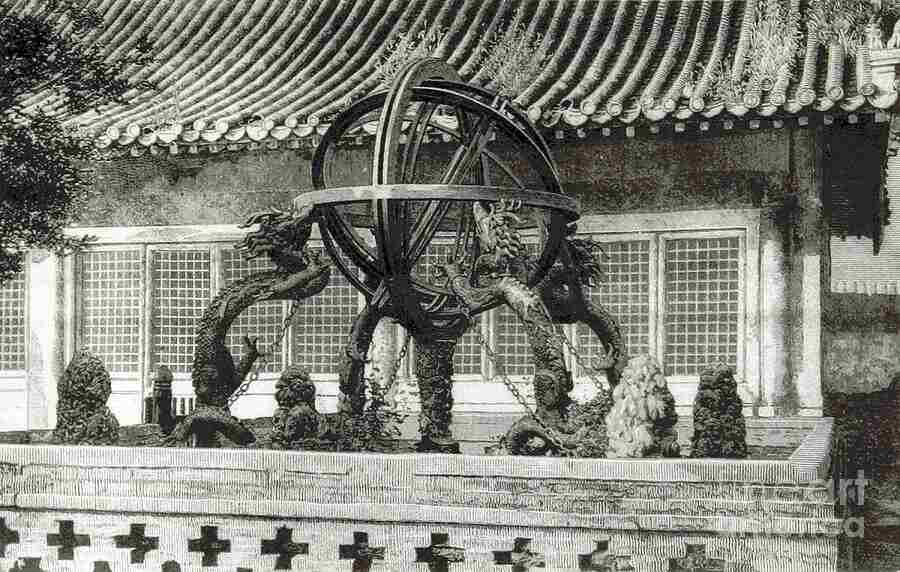The armillary sphere, a sophisticated ancient device designed to model the heavens, stands as a testament to humanity’s enduring quest to understand the cosmos. Despite its centuries-old origins, this intricate instrument continues to captivate historians, astronomers, and collectors alike. Its significance spans various cultures and epochs, revealing a rich tapestry of scientific endeavor and symbolic meaning.
Throughout history, the armillary sphere has symbolized the vastness of human curiosity and intellect. From its early use in ancient Greece to its presence in Renaissance Europe, this instrument has not only served as a practical tool for astronomers but also as a symbol of the universe’s structure. Its intricate rings, representing the celestial spheres, offer a glimpse into how our ancestors visualized the cosmos. Yet, despite its apparent clarity, the true origins and full potential of the armillary sphere remain shrouded in mystery, sparking both awe and speculation.

What We Know
The armillary sphere, often crafted from bronze or brass, is composed of several rings (or armillae) that represent the equator, meridians, parallels, and the ecliptic—the path the Sun follows through the zodiac. The device’s design allows it to model the movement of celestial bodies across the sky, making it an invaluable tool for early astronomers.
The earliest known references to an armillary sphere date back to ancient Greece, around the 3rd century BCE. The Greek astronomer Eratosthenes is credited with creating one of the first models, which was later refined by Hipparchus and Ptolemy. These early armillary spheres were relatively simple, featuring only a few rings, but they laid the groundwork for more complex versions developed during the Renaissance.
The primary function of the armillary sphere was to demonstrate the apparent motion of the stars and planets. By adjusting the rings, users could simulate the sky’s appearance at different times and locations. This capability made the armillary sphere an essential educational tool in the study of astronomy for centuries. However, it also served a symbolic purpose, representing the ordered nature of the cosmos and humanity’s place within it.

The Mysterious Origins and Spread of the Armillary Sphere
Despite its widespread use and significance, several aspects of the armillary sphere’s history and symbolism remain enigmatic. One of the most puzzling questions is the exact origin of the device. While Greek astronomers are often credited with its invention, some evidence suggests that similar instruments may have been used in ancient China or even by the Babylonians.
The question of who truly invented the armillary sphere is further complicated by the lack of definitive historical records. While the Greek contributions are well-documented, there is sparse information about whether these early models were inspired by or independently developed alongside instruments from other cultures. This lack of clarity leaves room for speculation about the armillary sphere’s true beginnings and its evolution across different civilizations. The mysterious and often overlapping histories of ancient innovations are also explored in the article on the Nimrud Lens, which delves into another artifact whose origins challenge historical narratives.
Another unresolved aspect is the extent of the armillary sphere’s use beyond Europe and the Mediterranean. Historical records indicate that during the Islamic Golden Age, scholars in the Middle East and North Africa made significant advancements in astronomy, yet there is limited evidence of armillary spheres being utilized in these regions. Whether this is due to the loss of artifacts over time or a difference in astronomical practices remains an open question.

Theories and Speculation
The mystery surrounding the armillary sphere’s origins has given rise to numerous theories. Some historians argue that the device’s design may have been influenced by earlier Babylonian or Egyptian astronomical instruments. The Babylonians, known for their advanced knowledge of the stars, could have developed rudimentary versions of the armillary sphere, which were later refined by the Greeks.
Another theory posits that the armillary sphere was a product of independent invention in multiple regions. This idea suggests that different cultures, each with their own astronomical traditions, could have created similar devices to model the heavens. If true, this would highlight a remarkable convergence of scientific thought across ancient civilizations.
Speculation also surrounds the symbolic meaning of the armillary sphere. While its practical uses in astronomy are well-documented, the device’s intricate design and frequent depiction in art suggest that it held deeper philosophical or spiritual significance. Some scholars believe that the armillary sphere was a symbol of the cosmos’ harmony, representing the balance between the heavens and earth. In this context, it may have served not only as a scientific tool but also as an emblem of the divine order of the universe.
Frequently Asked Questions (FAQs)
1. What is the oldest armillary sphere?
The oldest known armillary sphere is attributed to the Greek astronomer Eratosthenes, dating back to around 255 BCE.
2. What was an armillary sphere used for?
An armillary sphere was used primarily for teaching and demonstrating the movements of celestial bodies across the sky.
3. What does the armillary sphere symbolize?
The armillary sphere symbolizes the harmony and order of the cosmos, representing the universe’s structure.
4. What is armillary sphere astrology?
In astrology, the armillary sphere is used to visualize the positions of celestial bodies at specific times, aiding in the interpretation of astrological charts.
5. Do we still use the armillary sphere today?
While no longer used for practical astronomy, armillary spheres are still made as decorative items and educational tools, preserving their historical and symbolic significance.
Conclusion
The armillary sphere, with its intricate rings and celestial symbolism, remains one of history’s most fascinating astronomical instruments. While we have a clear understanding of its design and use, many questions about its origins and broader significance persist. The mystery of who first devised this instrument and how it spread across cultures invites further exploration and debate.
As we continue to uncover more about ancient technologies and their applications, the armillary sphere stands as a reminder of humanity’s enduring quest to comprehend the cosmos. Whether it was a Greek invention, a Babylonian precursor, or a product of independent invention across the world, the armillary sphere symbolizes our shared fascination with the heavens. In an age where digital technology reigns supreme, this ancient device still captivates, reminding us of the universal desire to chart the unknown.
Use of Our Content
⚠️ Content on “Mystery Uncover” is protected under US and International Copyright Laws.
You are free to reuse, republish, and share our content by giving credit to the source as Mystery Uncover with a link to the original material on mysteryuncover.com.






